In February 2005 I was a Staten Islander for a week!
I may have told this story before in one of my Staten Island pages, but I like telling it.
At the time I was still hard at work at what has proven so far to be the signature achievement of my life, the publication of Forgotten New York the Book on the HarperCollins imprint. As part of my work for the book, I was shooting new photos for all 650 entries to be featured. I realized that getting Staten Island photos would be difficult in just a few months, because it’s a long commute by Long Island Rail Road, subway and ferry from fab Flushing, where I was living at the time. Even if I did have a car, the exorbitant and usurious Verrazano Bridge toll would tax my resources.
Therefore, I obtained a room for one week at the Harbor House Bed and Breakfast at #1 Hylan Boulevard, overlooking the Narrows, just across the street from the Alice Austen House. It was quiet and secluded, away from the city, which was visible on the horizon across the water. A rooster crowed at 7AM (about sunrise) most days I was there. It was in the 60s when I arrived, but there was a snowstorm the day before I left. I met friends and went on dates in Manhattan, getting the bus to the ferry and then the bus back to the B&B late at night. Friends from Long Island came in to visit. On the final day pal Andy Hoffer arrived and we trucked it over to the long-abandoned NYC Farm Colony and snuck in. After over ten years it still has not been redeveloped and remains a magnificent ruin.
The week was dominated by hiking throughout the island, taking buses all over, and obtaining hundreds of black and white photos with a film camera as requested by my editor. I had a Staten Island bus map with me and charged up the Metrocard sufficiently for a week. For me, it was a rewarding experience and I recommend it to anyone. The Harbor House is still open and one of these years, while I can still get around easily, I’ll do it again.
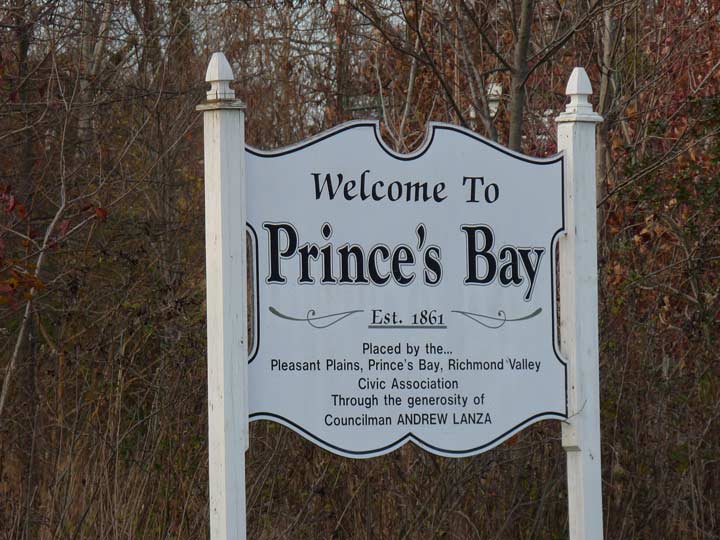
One of the places I visited in 2005, and have only been in once or twice since, is Prince’s Bay, on the south shore of the island about 3/4 distance to the end of Staten Island and the southernmost place in New York State in Tottenville, Ward’s Point.
Confusion has existed for decades about the neighborhood’s correct spelling, though most signs have it correctly now, including the “official” sign on Amboy Road and Seguine Avenue shown here. After the Revolutionary War ended, New York City virtually divested itself of royal place names, though Prince Street in Manhattan and Kings Highway in Brooklyn are still there. According to tradition, Prince’s Bay is so-called because before the Revolution, a British prince, the Duke of Nassau, who later became William III (he co-reigned with his wife and first cousin Mary II as William and Mary), once anchored a vessel in the actual bay at the foot of today’s Seguine Avenue. The name of the area is properly spelled with an apostrophe, though variants due to mispronunciation like “Princess Bay” have appeared in print. The French Huguenot Seguine family were early settlers in the area and resided here for a couple of centuries.
“Seguine”‘s pronunciation baffles me, as well, since I look at the word and sound it as “sa-GEENE”, but I am told that area residents pronounce it “sa-GUY-n” with a long “y.” Doesn’t seem natural to me, but I won’t judge.
There is both cared-for and uncared-for history in Prince’s Bay as well as a coastline, beach, rural creeks and suburban shopping malls. For many years, the local economy was dominated by oyster fishing and later, the production of dentures and other tooth-related products, but I’ll get to that.

The Staten Island Railway is the embarkation point for most of my Staten Island wanderings. A few years ago I did a thorough survey (a 6-part series) of the neighborhoods found at each SIR stop, and Prince’s Bay was on the list. A little obsessive, I know. I hope all my material is archived in perpetuity…
The SIR (which used to be called Staten Island Rapid Transit) got R-44 subway cars in 1972, replacing vintage Baltimore and Ohio Railroad passenger cars (seen here on this NYC Subway page), and right now they’re every bit as vintage as the B&O cars were in the 1970s. About 10 years ago the original yellow and orange seats were replaced with light blue seats. I also remember when you had to buy your ride from the conductor, who would get the $$ from everyone and hand them a paper transfer. In 1997, most SIR stations switched to a free-of-charge model, since the vast majority of passengers get off at St. George, which has turnstiles.
Walking south on Seguine Avenue from the Prince’s Bay SIR station, you’re on one of the oldest roads in the neighborhood and thus, there are a lot of small, modest homes on it that are nearly a century old or older, with wide, generous lawns. This is quite the opposite from how modern developers and architects like to do it today; for them, grass is just wasted space, as well as just two floors.
Some of the visions on Johanna Lane (among the newer developments, perhaps about 20 years old) are houses opposite each other decorated for Christmas and Halloween. I was here in mid-November.
The Reformed Church of Prince Bay (note the continuing spelling confusion of Prince’s Bay) bears a 1914 cornerstone — it must have been one of the few buildings in Prince’s Bay when constructed. According to Staten Island Genealogy it began as a Sunday School in 1895 and then became the Prince Bay Union Church; it gained its present name in 1921. The church’s garden contains four rose bushes planted in honor of four Army chaplains aboard the USS Dorchester when it was sank by a German U-boat in February 1943. The chaplains perished when they gave up their life jackets to fellow shipmates.
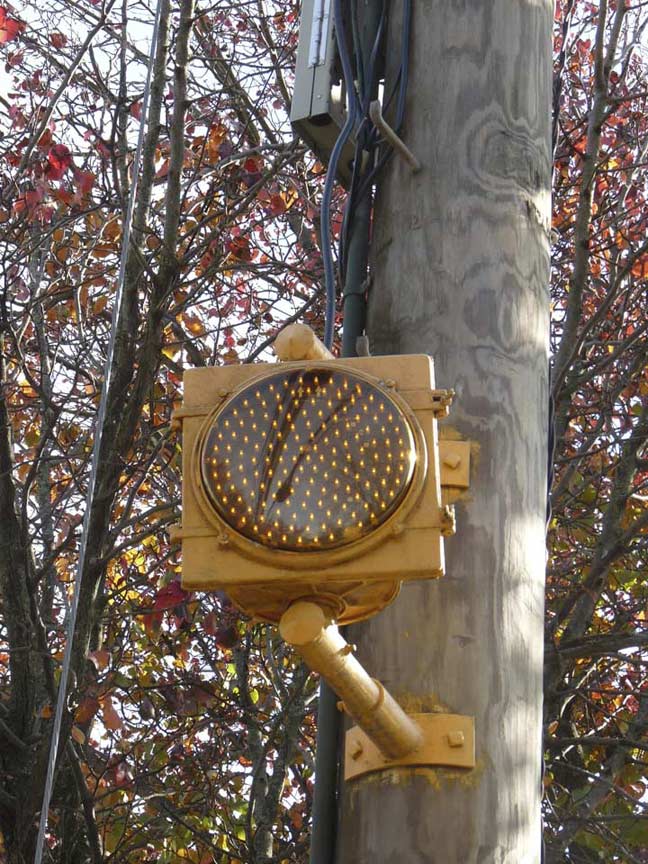
A blinking Cyclops traffic signal at a bend in Seguine Avenue at Seguine Loop, a latterday housing development, is sufficient to warn traffic.
South of Hylan Boulevard on the west side of Seguine Avenue are a couple of stands of osage orange trees along the side of the road. They were planted by the Seguines at the encouragement of family friend Frederick Law Olmsted, the co-creator of Central and Prospect Parks, who lived nearby in Eltingville from 1847 to 1853. Another group can be found at the fence bordering the Seguine Mansion a few blocks south. Osage orange trees can be recognized by their craggy trunks and green, grapefuit-sized fruits that are generally inedible. The wood is extensively used for gateposts and for the bows in archery. Though they were originally native to Texas, they are fairly frequent now in NYC’s larger parks. The species has nothing to do with the citrus family of plants.
Staten Island University Hospital stretches along the west side of Seguine Avenue between Keating and Melville Streets. It was instituted in 1935 as the Richmond Memorial Hospital and the original building still stands on Seguine and Melville. The original brick building was boxy and utilitarian, but there are interesting elements like the quatrefoil designs above the front entrance. SIUH has two campuses in Staten Island, here and in South Beach along Seaview Avenue. Unfortunately, its original building on Castleton Avenue in New Brighton, a magnificent, castle-like structure, was abandoned and left to collapse for two decades before it was finally razed.
At the end of Seguine Avenue stand two historic buildings associated with the Seguine family whose fates couldn’t have been more different.
Joseph H. Seguine’s grand Greek revival mansion, built in 1840 at 440 Seguine Avenue but entered from Hank Place, is reminiscent of Southern plantation houses. Joseph Seguine was a prosperous oyster trader, entrepreneur, farmer, and first president of Staten Island Railroad, which still has a Prince’s Bay stop. Unfortunately, the house’s most attractive feature, the porch with two-story pillars, is inaccessible from Hank Place, this being a privately-owned dwelling. The porch is best seen by the public from Lemon Creek Park at the foot of Seguine Avenue in winter.
Joseph Seguine (1801-1856) was also the president of the Staten Island Oil and Candle Company. He could walk to his place of business, since it was located in a large complex on Purdy Place just a couple of blocks away from the mansion.
In 1981, George Burke purchased the house and magnificently rehabilitated it. He donated it to the NYC Parks Department in 1989; the city will use the mansion as a museum after Burke’s decease. The house is open to the public on limited occasions such as Open House New York weekend in October.
The Seguines’ home reflects their prosperity. On the grand facade facing the water, six monumental square columns support a second floor gallery and classical pediment with a sweeping fanlight. Inside the house, Greek Revival mantels and plasterwork grace the spacious rooms, all of which feature tall windows and doors to circulate cool ocean breezes throughout the house. A wide, sloping lawn opens a broad vista to the bay. Historic House Trust
The mansion is also the subject of a coffee table book published in 2015.
Compare the treatment of the Seguine Mansion to, say, what is happening with the Steinway Mansion in Astoria, Queens…
… or even the Manee-Seguine House across Seguine Avenue from the Seguine Mansion.
Since I first became aware of it at the dawn of the Forgotten New York era, the status of this colonial-era house has only gotten worse as the years have gone by.
This boarded-up, abandoned farmhouse at 509 Seguine Avenue at Purdy Place may be one of Staten Island’s oldest dwellings. It has passed through the Seguine and Manee families, both early area settlers; the Manees likely added to an original one-room dwelling built late in the 1690s with a two-story fieldstone section early in the 18th Century. The Manee family sold the house and lands to the Seguines in 1786, and Joseph H. Seguine spent his boyhood here. By the 1870s, the house had been sold to Stephen Purdy, who operated it as a resort hotel for a few decades.
The old house is best seen today in winter from Purdy Place; a closer view can be had if you brave the weeds and thorns and walk right up to it from there. Since I saw it last, a chain link fence has been placed around the old building, making it harder to photograph than ever. Most passersby consider it an abandoned hulk and never guess that some of the building is 320 years old. The Manee family were French Huguenot (Protestant) immigrants, as were the Seguines.
Formerly there had been a number of roadhouses, bars and eateries at the foot of Seguine Avenue, servicing first the oyster boatmen and factory workers, but Lily Red’s is the sole remaining, serving the excursion boat owners at Lemon Creek Harbor. It is also a music performance venue.
Before heading for the Raritan Bay waterfront and the Lemon Creek area, I explored some of the side streets. There are still a very few remaining buildings from Prince’s Bay’s heyday as an oystering and manufacturing district such as the massive, Second-Empire style #51 Wilbur Place. It was constructed in the 1890s and the builder had a fondness for the slope-roofed, dormered Empire style, because its period of popularity had come and gone by 1890. It was something to see in its day, but long ago it was hidden underneath aluminum siding and these days, it seems like it’s on Death Row so that some Fedders Specials can replace it.
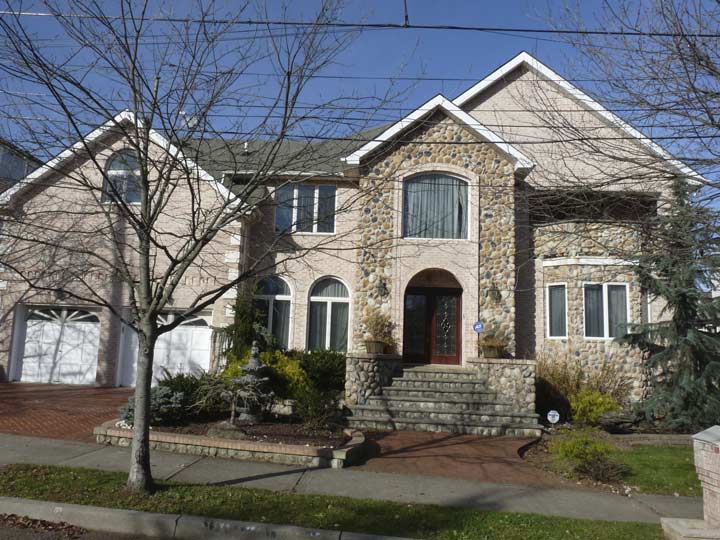
I sort of like its next-door neighbor on Wilbur Place, since some exterior cobblestoning detail appears around the entrance and side bay window.
Walking along Holten Avenue you get a glimpse of Wolfe’s Pond and the park that surrounds it. Named for a freshwater pond situated only a few yards from salty Raritan Bay, Wolfe’s Pond Park is named for original landowner Joel Wolfe, who farmed the land here until 1857. It became a public park in 1929. Snowy egrets, as well as blue herons, kingfishers, ducks, geese can be found along the pond, and bird fans will also find waxwings, scarlet tanagers and thrushes in the woods. Hurricane Sandy compromised the pond and made it brackish, so it is awaiting repairs.
A walk on the path along Wolfe’s Pond enables you to get “lost” in the jumble of galleries and paths in the forest. One of the paths takes you to a giant black oak tree whose trunk boasts a five-foot diameter. I couldn’t get too far from Holten Avenue because one of the pedestrian walkways was washed out and I didn’t trust my sense of balance enough to make it across. Philippe Petit, I ain’t.
A swing around to Holten Avenue reveals #486, one of the first houses built in the area known as a “stick style” building because of the thinness of the timbers. Some of the decorative wood details are still present.
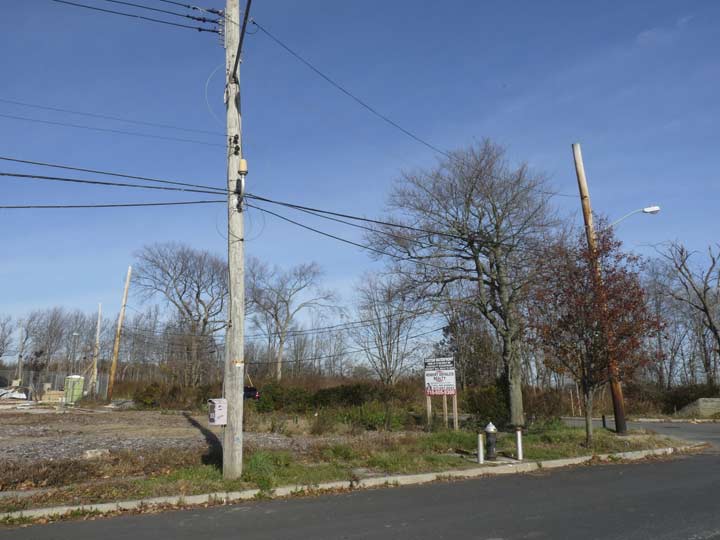
When I was here in 2005, there was a bar/restaurant at the corner of Holten Avenue and Purdy Place called Anderson’s Annex. I regret not going in, because Hurricane Sandy erased it in October 2012. It had been a staple since 1957.
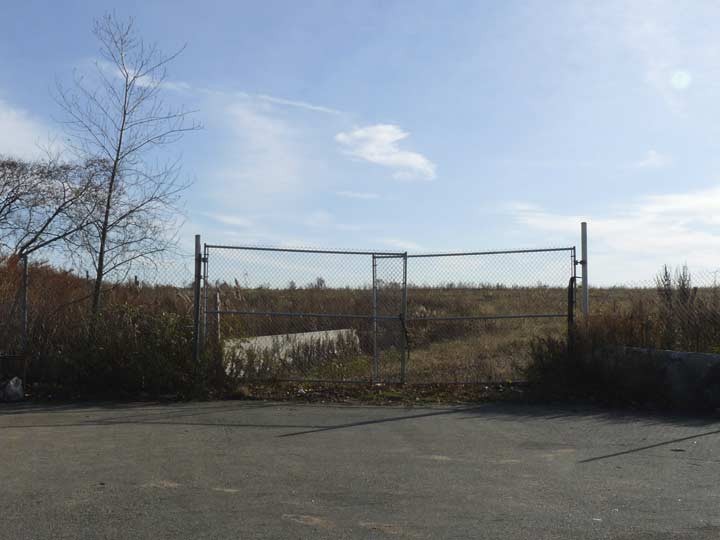
Directly across Purdy Place from the old Annex site is the site of the S. S. White Manufacturing Company, once the main employer in the area — at one time the largest producer of dental supplies in the world.

Here’s an 1874 atlas plate of Prince’s Bay. Raritan Bay and its inlet, Prince’s Bay, are at the bottom, Lemon Creek at left. The “Prince’s Bay House” is the Seguine Mansion, while the Manee-Seguine House is the largest gray rectangle just above the swampy area. Intriguingly, at the bottom is the Middleton Gas, Water and Drain Pipe Manufactory. Originally this had been a palm oil manufacturing plant owned by Joseph Seguine, then a drain pipe factory, until in 1876 the Johnston brothers, Algernon, Wilbur, Melville and William, purchased it and turned it into a dental supplies factory.
In 1881 the Johnstons merged with a dental supplies firm founded by Samuel Stockton White in 1844. The White complex attained its largest size in 1927 and remained in Prince’s Bay until 1972, turning out anything found in a dentist’s office including dental chairs, drills, metal fillings, toothpaste, mouthwash, dentures and bottled anesthetic gas. The company then relocated to Piscataway, New Jersey and has split from its parent company: there is now an S.S. White, which produces flexible airshafts for aircraft and state of the art surgical instruments and an S.S. White Dental, which continues to produce dentures and dental equipment.
There is one remaining legacy of the White plant, though: street names Johnston Terrace, Wilbur Place and Melville Street.
This trio of flimsy-looking dwellings miraculously survived Sandy and were constructed around 1890 by shipbuilder John Van Wyck, who has an avenue in Prince’s Bay named for him.
Next week: Lemon Creek and northern Prince’s Bay
Info: Preservation League of Staten Island
12/27/15


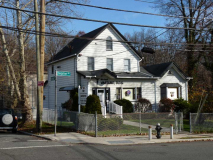
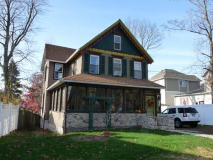
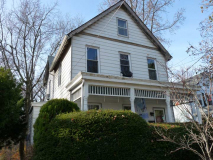

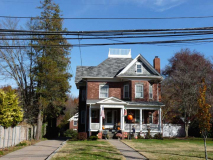

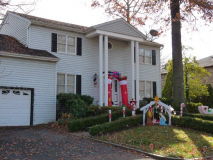
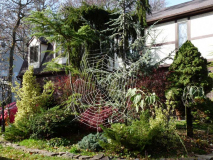
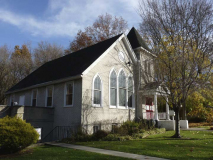
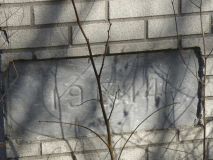

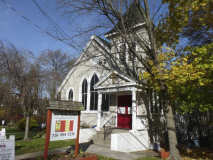
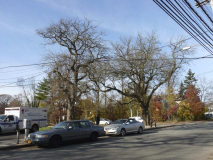
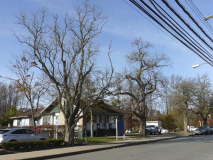
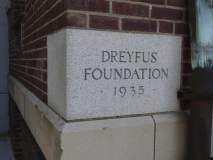
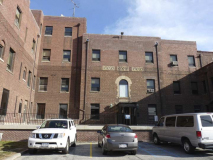
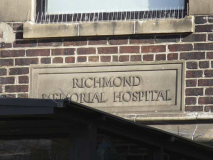
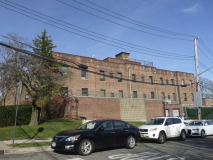
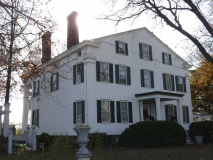
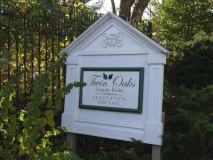
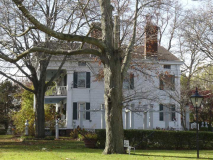
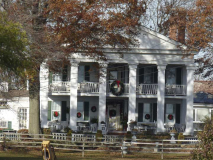
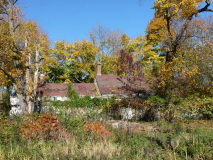
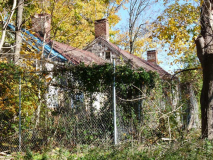
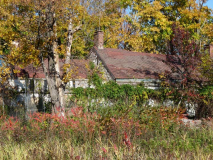
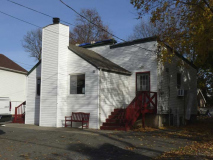
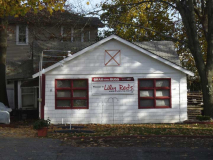

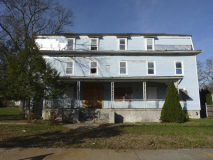
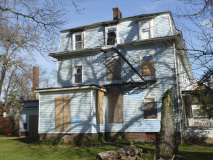
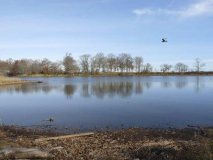
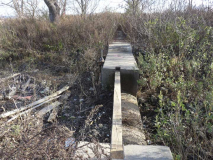

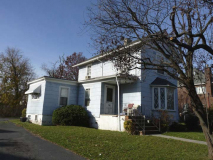
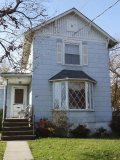
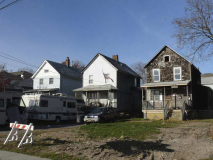
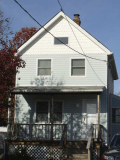
16 comments
Seguine = Sa-GUY-in
Ty for how to pronounce..
While we are on the subject of Lemon Creek, let’s pause to remember that the stream had the city’s last human operated drawbridge.
I remember visiting the S.S. White site after it morphed into a shopping mall (of all things!).
One of my favorite spots on Staten Island. A little bit of old homes and some decent new ones, and plenty of places to spend a solitary afternoon, which is a gift in a city of 8 million people and 4 million daily visitors. FYI, the blue seats on the Staten Island Railway cars were technically not replaced since they are just the old orange/brown seats painted a rather lovely shade of robin’s egg blue.
Hi Kevin, Check out:
http://www.silive.com/specialreports/index.ssf/2011/03/ss_white_was_supplying_the_wor.html
Native Staten Islander’s do pronounce it Sa-GUY-In Avenue and Princess Bay (hence the misspellings).
More like “Sa-GUYN” (two syllables, with the stress on the second syllable).
Sometimes I think you could see a lot more stuff if only you had a moped
I have always wondered about how Princes Bay got its name, as I grew up in that town, and attended Prince Bay Reformed Church, where I got married. I have learned that there was a Penelope von Princis who as a young bride was shipwrecked in the Staten Island/Sandy Hook area. Her young husband was killed by the indians, and she suffered severe wounds. She was left for dead, but another indian came along who nursed her back to health, and she finally returned to her people. She later married Richard Stout, an early settler of the NJ Highlands area, and was the mother of a great many children. I have often wondered if the beach this tragedy happened on was Prince Bay (spelling in my era) beach, and that is how the area got its name. Does anyone know more about this?
By the way, for many years there was an old tugboat stuck up on the mud flats of Lemon Creek at Prince Bay beach. Many people wondered how it had gotten there and thought a storm had swept it there. Actually, my great uncle Joe, who had worked at the shipyard and sailed from Mariners Harbor, had purchased it and gotten it up there. He used it as his “retirement cottage”. What a great idea!
My great grandfather from Finland built an absolutely beautiful and somewhat grand home on acres of park-like well-cultivated grounds in the Princess Bay, Prince’s Bay Area around 1920-1930. Suitably, my grandmother worked at the Richmond Memorial Hospital that used to be on Seguine Ave. So she could take a brief walk with just a few straightforward turns to visit her second-generation-Finnish beau at his family’s home when they were courting. And Wolfe’s Pond was a frequent outing. The house my ggf built used to be the only one on its street, which was then called Java Street in Princess Bay according to an old correspondence. Obviously, the street no longer exists under that name, and that much of the home’s land must have been divided up. But it would be a tragedy if his beautifully wrought house and at least some of the grounds were not still present. If I scanned black and white photos and sent them to you, might you be able to help with this puzzle? If only it had stayed in the family (or long enough to make us wealthy, lol)!
I am researching the Manee family and came upon a will that spoke of the Manee house in Prince Bay. The 1795 will of James Seguire, a farmer of Richmond County wills the Manee farm in Richmond County to his son Henry. I search the internet for Prince Bay and found your website. Thank you for the great photos of the farmhouse. Hopefully one day I will be able to take the tour and see what is left of it.
Re: The 4 rose bushes in the garden of The Reformed Church of Prince Bay – The son of the captain of the ship which sank with the 4 chaplains resided in Princes Bay for many years which may be why they are there.
When I was a little boy (1944-45) we would move from Flatbush to a small house on Seaguine Ave for the summer. I would transfer to PS 3 for the remainder of the school year. I remember the Palmer Boat Works at the foot of Seaguine Ave. I was friends with his two daughters, Mary Ann and JoAnn. I remember playing in the “woods” along Seaguine Ave.
I remember you Wheeler and your sister Lauren. Are you still in Brooklyn ? I am in Fl now